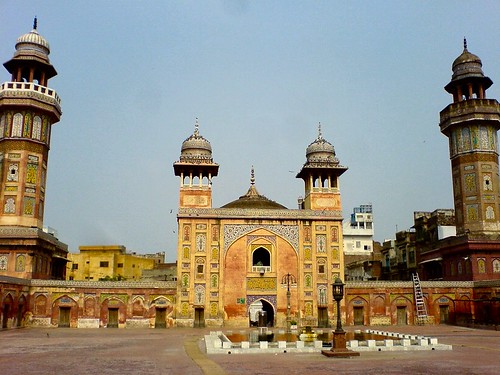
A red-brick building, in the Mughal Gothic Style, opposite Punjab University’s old campus at the Mall houses the Lahore Museum. Known to the common man as “Ajaib Ghar”, it contains a vast collection of antiques and valuable treasure. This repository of cultural and historical heritage offers one with a plethora of information about bygone days.
It was built in 1894 during the British rule and has been open to public since then. The building in which the museum is presently housed was built in 1887 to commemorate Her majesty Queen Victoria’s Golden Jubilee. His Royal Highness Prince Victor in 1890 laid the foundation stone. In 1893 the construction was completed, which was designed by Sardar Sahib Ram Singh.
Lectures and art and craft exhibition were also held in the premises which are yet some of the most popular activities of the museum.
At the beginning the museum only consisted of five galleries, later two more galleries were added. In 1965, again steps for renovation were taken. Besides this, new galleries such as the historical Jain Temple and ethnological I and II galleries were added in the late 1960’s. In 1973, the Pakistan Movement gallery, and Pakistan postage stamps gallery were set up. Presently the museum has twenty galleries and includes the miniature painting, Gandhara, Hindu, Buddh and Jain, Pre-historic and Proto-historic, Islamic, general, contemporary paintings, Jain temple gallery, arms, stamps, medal and coins gallery, the Sadequain gallery, the Ethnological Gallery I and II (Swat) and III (fabrics and clay models).
 One of the largest private museums Faqir Khana (the house of Faqir) located in the heavily congested part of the walled city in Bazaar Hakiman inside Bhati Gate of Lahore. It is in fact a treasure house containing three to four hundred years old paintings, carvings, manuscripts, carpets and innumerable other objects d’art. Faqir Khana is managed by the family of late Faqir Syed Mughis-ud-Din.
One of the largest private museums Faqir Khana (the house of Faqir) located in the heavily congested part of the walled city in Bazaar Hakiman inside Bhati Gate of Lahore. It is in fact a treasure house containing three to four hundred years old paintings, carvings, manuscripts, carpets and innumerable other objects d’art. Faqir Khana is managed by the family of late Faqir Syed Mughis-ud-Din.














.jpg)



